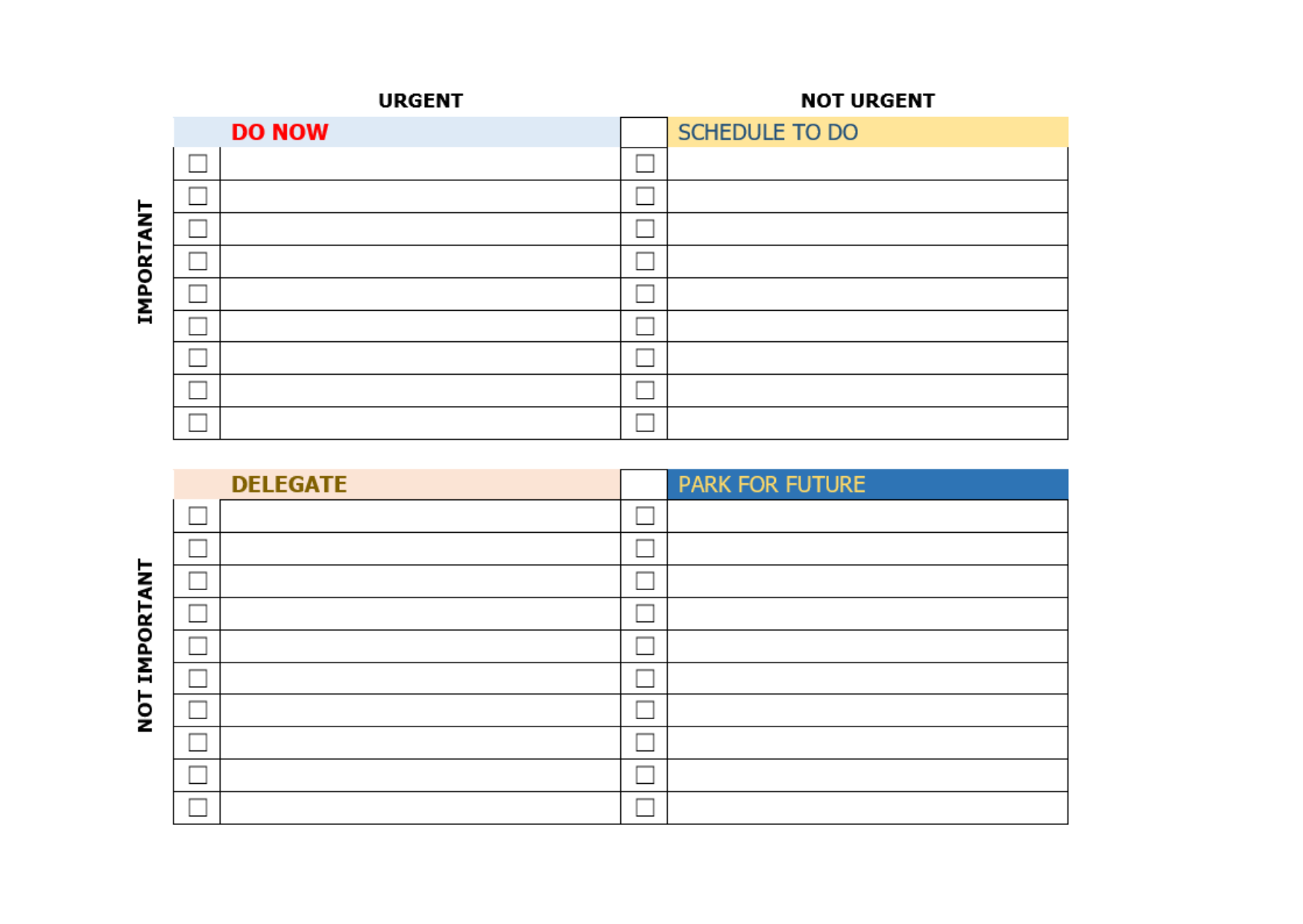The best techniques for prioritizing tasks
Mastering Task Prioritization: The Eisenhower Matrix Technique
As we navigate through our professional and personal lives, we are often bombarded with a multitude of tasks and responsibilities. Managing and prioritizing these tasks effectively is essential for maintaining a sense of control and productivity. One useful technique that can help you prioritize your tasks is the Eisenhower Matrix, a simple yet powerful method that divides tasks into four categories based on their urgency and importance. In this blog post, we will explore how to master task prioritization using the Eisenhower Matrix technique.
Understanding the Eisenhower Matrix
The Eisenhower Matrix, also known as the Urgent-Important Matrix, was popularized by former US President Dwight D. Eisenhower, who said, "What is important is seldom urgent, and what is urgent is seldom important." The matrix helps us differentiate tasks based on their urgency and importance, helping us identify what requires immediate attention and what can be delegated or eliminated.
The matrix consists of four quadrants:
Important and Urgent (Do First): Tasks in this quadrant are both important and require immediate attention. They often have impending deadlines or severe consequences if not completed promptly. Examples include emergency situations, critical project milestones, or time-sensitive client deliverables. Focus your efforts on these tasks to ensure they are accomplished in a timely manner.
Important but Not Urgent (Schedule): Tasks in this quadrant are important but do not require immediate action. These tasks contribute to long-term goals, personal growth, or essential relationships. Examples include strategic planning, skill development, relationship-building activities, or preventive maintenance. Schedule dedicated time for these tasks to avoid them becoming urgent in the future.
Urgent but Not Important (Delegate): Tasks in this quadrant require immediate attention but may not directly contribute to your long-term goals or objectives. These tasks can be delegated to others who can complete them. Examples include non-critical emails, routine administrative tasks, or simple requests. By delegating these tasks, your free up time to focus on more important responsibilities.
Not Urgent and Not Important (Eliminate): Tasks in this quadrant neither contribute to your long-term goals nor require immediate attention. They are often distractions or time-wasters. Examples include excessive social media browsing, unnecessary meetings, or unimportant personal errands. Eliminate or minimize these tasks to create more time for what truly matters.
Implementing the Eisenhower Matrix Technique
Now that we understand the Eisenhower Matrix, let's explore how to effectively implement it:
List and Assess Your Tasks: Start by listing all the tasks on your plate, both professional and personal. Then, evaluate each task's urgency and importance. Be honest with yourself and avoid getting caught up in the illusion of busyness. This step helps you gain clarity and a comprehensive understanding of the work ahead.
Assign Tasks to Quadrants: Categorize each task into the appropriate quadrant based on its urgency and importance. This step allows you to visually prioritize your tasks and determine where to allocate your time and resources.
Act: Start with the tasks in the Important and Urgent quadrant. These tasks require immediate attention and are crucial to your success. Once completed, move on to the Important but Not Urgent quadrant, allocating dedicated time for these tasks. Consider delegating the tasks in the Urgent but Not Important quadrant to appropriate team members or colleagues. Lastly, eliminate or minimize the tasks in the Not Urgent and Not Important quadrant from your to-do list.
Regularly Review and Adjust: Priorities can shift, and new tasks may arise. It is crucial to regularly review and adjust your task list accordingly. Set aside time, perhaps on a weekly or monthly basis, to assess and update your priorities using the Eisenhower Matrix. This ensures that you maintain a clear focus on what truly matters and avoid getting overwhelmed by non-essential tasks.
Benefits of Using the Eisenhower Matrix
By implementing the Eisenhower Matrix technique, you can benefit in several ways:
Improved Focus: The matrix helps you concentrate on what truly matters, rather than getting caught up in trivial or non-urgent tasks.
Enhanced Decision-Making: The matrix provides a framework for making informed decisions about task prioritization, allowing you to allocate your time and resources wisely.
Reduced Stress: By addressing tasks based on their urgency and importance, you can better manage your workload, leading to reduced stress and a greater sense of control.
Increased Productivity: Prioritizing tasks using the Eisenhower Matrix ensures that you are dedicating time to activities that contribute to long-term goals and key objectives, ultimately increasing your productivity.
Mastering task prioritization is crucial for achieving success and maintaining a healthy work-life balance. The Eisenhower Matrix is a valuable tool that can help you prioritize your tasks effectively, focusing on what truly matters while eliminating or delegating non-essential responsibilities. By implementing this technique, you can enhance your decision-making, reduce stress, and increase productivity, leading to a more fulfilling and satisfying professional and personal life.
See below: Adapted Eisenhower Matrix


